
About UsThe Numismatic Bibliomania Society is a non-profit organization promoting numismatic literature. For more information please see our web site at coinbooks.org SubscriptionsThose wishing to become new E-Sylum subscribers (or wishing to Unsubscribe) can go to the following web page link MembershipThere is a membership application available on the web site Membership Application To join, print the application and return it with your check to the address printed on the application. Membership is only $15 to addresses in the U.S., $20 for First Class mail, and $25 elsewhere. For those without web access, write to: David M. Sundman, Secretary/TreasurerNumismatic Bibliomania
Society AsylumFor Asylum mailing address changes and other membership questions, contact David at this email address: dsundman@LittletonCoin.com SubmissionsTo submit items for publication in The E-Sylum, just Reply to this message, or write to the Editor at this address: whomren@coinlibrary.com
BUY THE BOOK BEFORE THE COINYou won't regret it! |
- WAYNE'S WORDS: THE E-SYLUM JANUARY 27, 2013
- LAKE BOOKS SALE #113 PRICES REALIZED AVAILABLE
- SOME SKLOW NUMISMATIC LITERATURE SALE #18 LOTS
- KOLBE & FANNING GEORGE KOLBE EPHEMERA SALE #1
- BOOK REVIEW: THE HAWAII OVERPRINT CURRENCY CATALOG
- ALAN HERBERT 1926-2013
- ON THE TOP U.S. MINT DIRECTORS
- NOTES FROM E-SYLUM READERS: JANUARY 27, 2013
- OWNER OF THE SPRINKLE 1884 TRADE DOLLAR SOUGHT
- GEORGE WALTON PHOTO IDENTIFICATION SOUGHT
- ARTICLE PROFILES $24,000 HOBO NICKEL BUYER CHRIS DEMPSEY
- 1794 DOLLAR SALE COVERAGE
- 1792 HALF DISME SALES
- QUERY: ASSISTANCE SOUGHT FOR RESEARCH ON 1792 COINAGE
- MORE ON THE 1811-DATED "OIE DIOE" TOKEN
- ROYAL CANADIAN MINT TO ACCEPT CENTS FOR MELTING
- A PANIC OF 1893 NOTE FROM RICHMOND, VA
- 1949 HARRY TRUMAN OFFICIAL INAUGURAL MEDAL
- ATTRIBUTING U.S. COINS AT THE BRITISH MUSEUM
- SOME RECENT NEW COIN DESIGNS: JANUARY 27, 2013
- INTERVIEW WITH AUTHOR OF WORLD CURRENCIES IN TAIWAN
- BRITAIN'S 1M AND 100M POUND BANKNOTES
- MORE ON THE PROPOSED 7 1/2 CENT "COCA COLA" COIN
- FEATURED WEB SITE: BRITISH RESTAURANT TOKENS
WAYNE'S WORDS: THE E-SYLUM JANUARY 27, 2013

New subscribers this week include Robert Goler, Dale Gast and Jeremy Uota. Welcome aboard! We have 1,619 email subscribers, plus 210 followers on Facebook.
This week we open with updates from numismatic literature dealers Fred Lake and Kolbe-Fanning, followed by my review of Jeremy Uota's new book on Hawaii Overprint Currency. Next, we have several reader tributes to the late author Alan Herbert.
Other topics include Frank Sprinkle's 1884 Trade dollar , the top U.S. Mint Directors, 1913 Liberty Head nickel owner George Walton, buyer of the $24,000 Hobo Nickel Chris Dempsey, and an interview with the author of World Currencies in Taiwan.
To learn more about William Kimball's Album of Ancient Coins, George Kolbe's numismatic ephemera collection, Steve Tanenbaum's shell card collection, Mint Directors Rittenhouse, Patterson, Patterson, Ross and Brooks, the 100 million pound banknote, and currency burned in the Nuuanu Mortuary crematorium, read on. Have a great week, everyone!
Wayne Homren
Editor, The E-Sylum
LAKE BOOKS SALE #113 PRICES REALIZED AVAILABLE
The prices realized list for our sale #113 which closed on January 22, 2013 is now posted on the Lake Books web site at www.lakebooks.com/current.html .
Many of the lots that featured difficult to find items brought very high prices and overall the sale sold over 90 percent of the offerings.
Our next sale will be held in early April and will feature selections from the library of T. L. Shuck along with more material from David E. Litrenta's large library.
Cordially, Fred
Lake Books
6822 22nd Ave. N.
St. Petersburg, FL 33710
727-343-8055 Fax 727-381-6822
SOME SKLOW NUMISMATIC LITERATURE SALE #18 LOTS
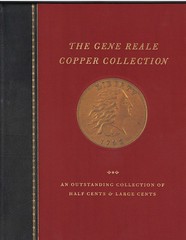 Lot 288. Reale, Gene. THE GENE REALE COPPER COLLECTION: A COLLECTION OF HALF CENTS AND LARGE CENTS IN SUPERB UNCIRCULATED CONDITION. Privately printed, Lunenburg, Vermont. July 25, 1995. 110pp. 4to. Quarter black leather, red silk cloth, gilt, 8.25cm color photograph of 1793 wreath cent inset front cover, pictorial pastedowns and endpapers depicting scenes of the early minting process, housed in a full black leather solander box, with red leather title label inset front, five raised spine hubs.
Lot 288. Reale, Gene. THE GENE REALE COPPER COLLECTION: A COLLECTION OF HALF CENTS AND LARGE CENTS IN SUPERB UNCIRCULATED CONDITION. Privately printed, Lunenburg, Vermont. July 25, 1995. 110pp. 4to. Quarter black leather, red silk cloth, gilt, 8.25cm color photograph of 1793 wreath cent inset front cover, pictorial pastedowns and endpapers depicting scenes of the early minting process, housed in a full black leather solander box, with red leather title label inset front, five raised spine hubs.
A simply magnificent book, with full color illustrations of each Half Cent and Large Cent; each coin has its provenance and full description listed below its obverse and reverse illustration; the verso of the half title page is inscribed – To Bob Yuell –EAC #218, Reasonably Famous New Jersey Collector 2/26/08 [signed] Gene Reale; this outstanding work is a very limited edition and is unnumbered; the only defect is a few very slight shelf rub marks to the front of the solander box; seldom offered for sale and rumored to have been originally released in 1995 at $2000 each; Very Fine. (750.00)
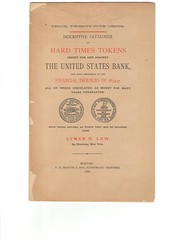 Lot 904. Low, Lyman H. DESCRIPTIVE CATALOGUE OF HARD TIMES TOKENS ISSUED FOR AND AGAINST THE UNITED STATES BANK, AND WITH REFERENCE TO THE FINANCIAL TROUBLES OF 1834-41. ALL OF WHICH CIRCULATED AS MONEY FOR MANY YEARS THEREAFTER. New York, 1886. 18pp. (2). 8vo. Original tan printed paper covers.
Lot 904. Low, Lyman H. DESCRIPTIVE CATALOGUE OF HARD TIMES TOKENS ISSUED FOR AND AGAINST THE UNITED STATES BANK, AND WITH REFERENCE TO THE FINANCIAL TROUBLES OF 1834-41. ALL OF WHICH CIRCULATED AS MONEY FOR MANY YEARS THEREAFTER. New York, 1886. 18pp. (2). 8vo. Original tan printed paper covers.
The first such reference on the subject; prices were affixed at which the pieces could be purchased from Low; this example was David Proskey’s copy, and is annotated throughout in pencil, each example is noted by Proskey with an “S” and the Scott number or “O” to denote not in Scott; tipped in are clippings from auction catalogs with Hard Times Tokens being offered, one clipping has dates and prices in Proskey’s hand; also tipped in is a receipt from the Y.M.C.A. for dues made out to David Proskey dated July 1, 1873; a plastic sleeve accompanying has written in Champa’s hand – Low Lyman Catalogue of Hard Times Tokens 1886, David Proskey’s Copy with his penciled notations, Kolbe Sale; covers are present, but detached; few small chips; a scarce item; Ex: Bowers and Merena Sale of the Armand Champa Library Part I Lot 390; Ex: G.F. Kolbe Sale 24 Lot 640; Davis 638: Very Good. (100.00)
Lot 975. Blumel, Alfred Joseph {editor}. THE COINAGE OF DIFFERENT COUNTRIES: A SCIENTIFIC STATEMENT DEDICATED TO HIS EXCELLENCY THE PRESIDENT CALVIN COOLIGE BY THE EDITOR ALFRED JOSEPH BLUMEL. Vienna, Austria. 1926 American edition. 45 back to back mounted embossed foiled cards depicting coinage from different countries. 16mo. 15.5 x 9.5cm. Original burgundy textured cloth covers, gilt lettering. One of only ten special presentation examples produced; an article appeared in The E-Sylum Volume 8, Number 2, January 9, 2005 concerning these albums and Dick Johnson gave some great information concerning their creation, rarity and a link that illustrated the album from the June 24, 2000 Goldberg Auction where it realized $863; the cards are magnificent representing Argentina to Venezuela, each with tissue protector overlay; a very rare item; covers have some shelf rub; Fine. (700.00)
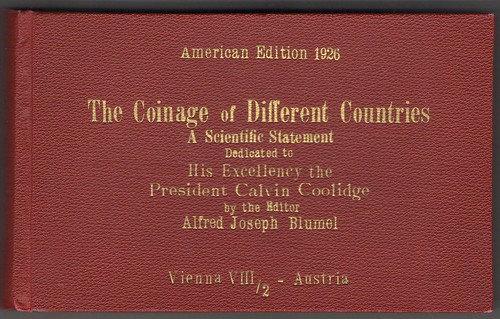
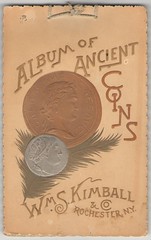 Lot 1036. Kimball, Wm. S. & Co. ALBUM OF ANCIENT COINS. Rochester, N.Y. circa 1880’s. i-xii, twelve 17.5 x 11cm heavy stock chromolitho booklet. Original tan embossed card covers, cord tied. Embossed metallic ink card stork, silver, copper and gold; deckled edge card stock; beautiful ancient coinage; Kimball’s company was a tobacco factory and he knew the value of advertising; he produced many different styles, with the numismatic content the most difficult to locate; covers show slight fading; a very scarce item; Fine. (200.00)
Lot 1036. Kimball, Wm. S. & Co. ALBUM OF ANCIENT COINS. Rochester, N.Y. circa 1880’s. i-xii, twelve 17.5 x 11cm heavy stock chromolitho booklet. Original tan embossed card covers, cord tied. Embossed metallic ink card stork, silver, copper and gold; deckled edge card stock; beautiful ancient coinage; Kimball’s company was a tobacco factory and he knew the value of advertising; he produced many different styles, with the numismatic content the most difficult to locate; covers show slight fading; a very scarce item; Fine. (200.00)
For more information, see the earlier E-Sylum article: SKLOW NUMISMATIC LITERATURE SALE #18 CLOSES FEBRUARY 2, 2013 (www.coinbooks.org/esylum_v16n03a03.html)
KOLBE & FANNING GEORGE KOLBE EPHEMERA SALE #1
Kolbe & Fanning are pleased to announce the commencement of a series of occasional internet sales featuring numismatic ephemera acquired over several decades by the firm’s founder, George Kolbe. The sales will include a diverse offering of numismatic memorabilia, letters, circulars, photos, promotional materials and other miscellanea. The usual mail-bid terms of sale will apply but printed listings will not be issued. It is anticipated that each sale will feature 100 lots, which will be posted on the firm’s website at www.numislit.com on a regular basis. Bids will be accepted by phone, fax or email.
A few of the highlights in the first sale, which opens today and closes on Tuesday, February 12, follow:
 —A letter from Eliasberg to Mehl about the 1804 dollar
—A letter from Eliasberg to Mehl about the 1804 dollar
—An early offering of Confederate stamps, notes & bonds
—An invoice for a controversial western ingot
—A promotional circular for the 1904 Numismatist
—Frank Norton resigns from the AJN
—Lyman Low offers Crosby’s Early Coins of America
—Program from the 1916 ANA Convention
Download the sale today and don’t delay in bidding!
To view the sale, see the firm's web site at:
www.numislit.com
First, these items often contain information not to be found anywhere else. For example, the prospectus for an auction could state how many deluxe or special editions were produced; an early U.S. Mint price medal price list indicates what medals were available when, their original issue price, and perhaps how many of different types were struck.
Second, they are generally as rare as hens' teeth. By their very nature these ephemeral items were not meant to be saved, and most people didn't. No matter how many copies might have been produced originally, often only a few remain. Some of them may be unique - the only known surviving example in the world.
Third, they are a tangible link to the numismatic past - as the cliché goes, "History in your Hands".
Lastly, they are just plain fun. Rarely seen, you can amaze your numismatic friends with artifacts more rare than an 1804 Silver Dollar or 1913 Liberty Nickel. I'll never forget Ken Lowe's description of John Ford's comments on viewing an exhibit of my ephemera collection. "I've never even SEEN that!" "Where the HELL did he get THAT???!"
So be sure to check out the catalogs for items that catch you eye. -Editor
BOOK REVIEW: THE HAWAII OVERPRINT CURRENCY CATALOG
 Title: The Hawaii Overprint Currency Catalog
Title: The Hawaii Overprint Currency Catalog
Author: Jeremy A. Uota
Publication Date: 2012
Paperback: 258 pages (full color)
Publisher: Stuffcyclopedia LLC
Language: English
ISBN-13: 978-0-9840030-5-19
Product Dimensions: 8.5 (width) x 11.0 (height) x 0.5 (thick) inches
Weight: 2.2lbs
Jeremy Uota's new book on Hawaii overprint currency is a great resource for collectors of U.S. paper money or World War II numismatica. The 257-page The Hawaii Overprint Currency Catalog is available on Lulu.com for $74.95.
While some of the basic information presented here is standard fare for U.S. Paper Money collectors, the level of detail shown here is available nowhere else in a single volume. The book opens with an introductory section describing the wartime orders surrounding currency hoarding and plans for a possible "substitute paper money" in preparation for a feared Japanese invasion.
I learned something interesting early in the Introduction - that the planned money was called "Emmons money" after the Military Governor of the Territory of Hawaii, Lt. General Delos C. Emmons. The name was promoted by Major General Thomas H. Green, Executive to the Military Governor. A little kissing up to the boss, perhaps? In any event, the official name used in later documents was "U.S. Currency, Hawaiian Series".
Green recounted an interesting story about the first Hawaiian Series notes to arrive:
I obtained the first four one dollar bills of this Emmons money to be issued in Hawaii by exchanging it for four one dollar bills or regular currency. At my request, General Emmons endorsed his name on all four bills and I did likewise. I then sent all four bills to Admiral Nimitz with the request that he endorse his name on all four bills, retain one for his scrap book and return the other three to me.
Nimitz signed the notes, but returned all four to Green. So where are these notes today? I reviewed the Short Snorter section for notes signed by these three individuals, but found no record of them. I asked Jeremy Uota, who writes:
I too would like to find those notes. Nimitz autographed notes are available. Emmons and Green are lesser known in military history and don't show up in descriptions even if they signed a note.
About $200 million in normal U.S. currency was collected in exchange for the new notes. The collected currency was burned in the Nuuanu Mortuary crematorium. Uota writes: "It is difficult to comprehend how many Hawaii national bank notes and other rarities were incinerated."
Another thing I learned about the Hawaiian overprint currency was that it was also used as an invasion currency in the Pacific Theater, and was used to pay troops on Midway island and elsewhere in the Pacific.
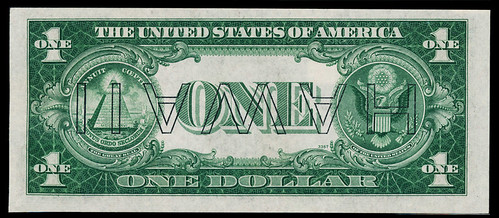
Inverted overprint
Other sections discuss the design of the notes and the various features making them distinct from regular U.S. currency. Plate layout, star notes and other varieties are discussed. Page 41 is a checklist of the major series and known check letter pairs.
The core of the book are chapters on each of the four official print run denominations, $1, $5, $10 and $20. Each chapter is well illustrated, showing multiple examples of various check letter combinations. Another major section discusses the printing process and error notes. Pages 134-135 hold a handy guide to overprint variations. Another interesting section titled "Eclectic usages" covers short snorters, stamped, cancelled and dated Hawaii notes. (Short snorters were notes signed by a number of people, often taped together in lengthwise rolls as souveniers).
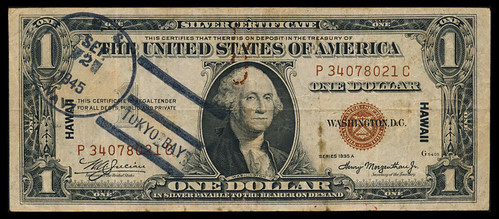
V-J date cancellation
Many thanks to Jeremy Uota for providing me a review copy and electronic versions of the images shown here. This is a nice book that pulls together information and images from many disparate sources into a useful format for collectors and students of the series.
Jeremy Uota adds:
This study would not be possible without the contributions of Peter Huntoon, Don Medcalf, and Jim Simek.

HONOLULU fantasy note
To read the earlier E-Sylum article, see: NEW BOOK: THE HAWAII OVERPRINT CURRENCY CATALOG (www.coinbooks.org/esylum_v15n51a03.html)
Mark your calendar!
Tuesday, January 29, 2013
Internet-Only Sale
Selections from the
Steve Tanenbaum Collection
of
1867-1876 Shell Cards
Among the rarest, most interesting, and most significant specialties within 19th century American numismatics are shell cards. These are metal encasements somewhat like encased postage stamps in concept. Most are in the range of 34 to 39 cm, or the size of American double eagles and Liberty Seated dollars. In fact, many of these have these coin motifs. Others have a circular mirror on one side—intended to have the recipient keep the shell card is it remained useful. Otherwise, trade tokens and related exonumia were apt to be discarded.
The other side has the advertisement of a merchant, service, or product. Some of these are in embossed brass, as in the manner of encased postage stamps, while others are printed circular thin cardboard discs, usually in color.
These were a passion for the late Steve Tanenbaum, and he spent over 40 years collecting them—in the process forming the largest such collection ever. Part 2 will be offered in a forthcoming Stack’s Bowers Galleries sale, probably in connection with our official auction for the Whitman Coins & Collectibles Expo in Baltimore in June. As a reality check, the largest other collection known to me is that of the American Numismatic Society and comprises about 100 pieces. A “great collection” of shell cards would be doing well to have as many as 50!
The collection is NOW on line at the Stack’s Bowers Galleries website. Bids are being accepted now and will be until the closing on Monday, January 29. The shell cards are lots 14,000 to 14,104. No comparable offering has taken place in the past century!
As there is no reference book at all on this subject (imagine that!), I am in the process of creating one. It will be color-illustrated, on fine paper, and will have all of the information I can find. I am not ready to announce a publication date (in that way I can’t possibly be late!), but it is about 80% done. A visit to the American Numismatic Society is in the offing so I can capture information on any varieties unknown to me. When the book is ready I or the publisher will make advance announcements. Likely, the press run will be limited.
I invite you to visit the Stack’s Bowers Galleries website, read the introductory material I prepared—about the history and other aspects—contemplate the listings, and bid for any that are of interest. In the meantime, my best wishes to you
![Shell cards 232792_01[1]](http://farm9.staticflickr.com/8091/8386073105_4a5727574d_t.jpg)
![Shell card 232792_02[1]](http://farm9.staticflickr.com/8211/8387158598_f1ab118335_t.jpg)
ALAN HERBERT 1926-2013
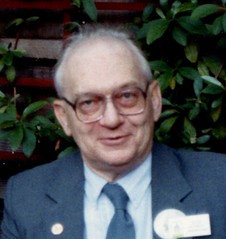 Alan Herbert, 86, of Belle Fourche died Saturday, Jan. 19, 2013, at the Fort Meade Veterans Hospital.
Alan Herbert, 86, of Belle Fourche died Saturday, Jan. 19, 2013, at the Fort Meade Veterans Hospital.
Alan (Masslich) Herbert was born in Chicago on June 13, 1926. He moved to New Hampshire at the age of 6, after his mother, Martha, remarried, he was adopted by his step father, Willis Erwin Herbert.
Following high school he entered the Army in September 1944. After basic training at Camp Joseph T. Robinson in Arkansas, he served with the 15th Army Artillery in Europe. He remained in Germany until 1948 before marrying Liselotte Schellenberger and returning to the U.S. He operated the Fort Bragg, NC hospital radio station until his discharge in 1949.
He enlisted in the Army Reserves after the outbreak of the Korean War and was shipped to the 3rd Infantry Division where he served as a combat correspondent for 11 months. Beside ribbons earned in the European Theater, he received a Purple Heart and a Bronze Star and a field promotion to sergeant while in Korea. His vivid description of an ambushed tank patrol was carried on the entire ABC radio network and brought letters of commendation from several ranking officers.
Herbert spent 27 years in radio and TV, the last 13 as News and Program Director of KBFS Radio in Belle Fourche, SD. Earlier he trained at the American Forces Network stations in Frankfurt and Bremen, Germany, and worked at commercial radio stations in Vermont, New Hampshire, South Dakota and North Carolina.
His first wife died in 1992. They had one son, Richard, who died in infancy of SIDS in 1952. In 1994 he married Josephine Noyce, who died of lung cancer in 2001.
In 1963, he began collecting coins. In 1967, he began writing a weekly column in the bulletin of the Collectors of Numismatic Errors. He served as Secretary of CONE (later CONECA) from 1967 to 1991, and was the first person elected to the CONECA Hall of Fame.
In 1968, his work attracted the attention of Numismatic News and he began writing a column for a national audience, called the Odd Corner, since renamed, but continuous to this day, missing only two or three issues.
Herbert spent several years in Germany, first as a freelance writer photographer, later as European Bureau Manager for Krause Publications (Now F+W Publications.) He returned to the States in 1987 and worked for seven years at company headquarters in Iola, Wisconsin, retiring in 1994 after serving two years as editor of Coins Magazine.
He joined the American Numismatic Association in 1971 and became a life member in 1993. He has served as an exhibit judge since 1979. He was elected to the ANA Board of Governors in 1999, lost in 2001, then regained his seat from 2003 to 2008. In 2010, he replaced a resigning Governor and was once again on the Board.
Herbert wrote and illustrated two sections of the ANA Correspondence Course and served as chairman of several Board committees, including Consumer Protection, Information Technology and Terms and Standardization. He presented a number of programs, both in the ANA Numismatic Theater and for other clubs across the country. He actively supported the Young Numismatist programs and sponsored a YN exhibit award. He was a member of the ANA 1891 Club.
Among numerous awards from the Numismatic Literary Guild, Herbert was given the prestigious Clemy award in 1997. The ANA awarded him their Medal of Merit in 1994 and the Glen Smedley Award in 2001. Numismatic News made him a Numismatic Ambassador in 2004.
Other firsts included being the first journalist to cover the meetings of the World Mint Director's Conference, beginning in 1976. He began working with computers in 1978 when Apple was still a toy. He served as a technical consultant for the Krause "Standard Catalog of World Coins” for many years.
His question and answer columns (Coin Clinic) appear in each issue of four publications Numismatic News, World Coin News, Bank Note Reporter and Coins Magazine. He served as a contributing editor for all four publications.
As an author, he recently finished the seventh edition of "The Official Price Guide to Mint Errors," which first appeared in 1972. Two books featured frequently asked questions from his question data base. An earlier book covered investing in silver dollars. A recent book, "Coin Collecting 101" is directed at the novice and intermediate collector. He was currently putting the finishing touches on "The Official ANA Dictionary."
A crowning achievement was the compilation of the PDS System for cataloging minting varieties. He also produced a similar system for paper money errors. As a professional photographer he cataloged and photographed examples from more than 9,000 different coin dies.
On the home front, Herbert was a Master Mason in Cedar Lodge 124 in Belle Fourche, a member of the Moose lodge, a charter member and past commander of the AMVETS Post # 1 in Belle Fource, and was also a member of the American Legion post. He was an active member of the Christian Life Center.
In 1970 he spearheaded an unsuccessful drive to get Mount Rushmore on the back of the $2 note, climaxing with a "Billion Dollar" banquet put on by the Chamber of Commerce with the Bureau of Engraving and Printing Director, James Conlon, as the featured guest, along with South Dakota’s then Governor, Frank Farrar.
To read the complete article, see: Alan Herbert (rapidcityjournal.com/alan-herbert/article_a14b4909-860f-54b5-bd28-1c0d04d726eb.html)
Bob Van Ryzin writes:
I am saddened to learn of Alan Herbert's death. He was a true friend and a good colleague during my years here at Krause Publications.
Alan used to like to rewrite the hobby axiom about buying the book before the coin to add that you should read the book as well.
I remember that when I started I took this to heart, as I read everything I could get my hands on. At one time I could say that I read everything Alan wrote. I learned a lot from him, as did others in the hobby.
Alan was a true professional. If you asked him for a column, he would reply quickly with, "'l'll get right on it." You would soon have the polished, finished product in hand.
I was honored that he asked me to write forewords for a couple of his books. I was even more honored when he agreed to do one for one of mine.
Goodbye, Alan. You will be missed by the hobby and your friends.
George Cuhaj writes:
I only worked with him for two months before he left town. His legacy to me, was that I bought his used Fifth Avenue, which his neighbor had backed into on the driver's side door. He did not repair it. However, for me, as my first car, it was a land yacht, and served me well for three years until I hit a patch of ice, did a 180 over a low grassy median and three lanes of traffic and ended by hitting a bridge guardrail broadside. No injuries to me the driver, but the car was totaled.
It served me well those first years in Wisconsin, and the scouts in the troop loved it when I would take out a raccoon or two traveling to camp and they would go thump, thump, thump in the wheel well before being ejected
We just received word of the Passing of noted numismatist Alan Herbert. We have known Alan for many years and John served on the ANA Board with him. Alan was one of the most knowledgeable numismatists we have ever known. We always joked with Alan that he not only should be the Answerman for Krause (F + W) Publications, but also the ANA - he would have to answer the hard questions. We will never forget the Tucson, AZ ANA convention held some years back. It was the time the ANA was debating what to do with the Keith Stock. J. T. Stanton, Alan Herbert (always ready with his camera) and myself (John) were at the Krause Publications booth. Probably J. T. got the idea that he would put his hand in the cookie jar (representing the ANA Keith stock), and I would shake my finger at him. The photo was taken by Alan and appeared in one of the upcoming Numismatic News stories. The Keith stock stayed solvent then as well as it is today.
Alan, was a gentleman of the highest degree and always had a calm and cool presence about him. He was not only an employee of Krause, but a dedicated numismatist for many organizations - especially ANA. We remember one time at the ANA Summer Seminar where we saw Alan unloading his car at the headquarters loading dock. He was almost done unloading about a dozen boxes of numismatic references he was donating to the Association. It was a fine assortment of books and not auction catalogs (which have little value).
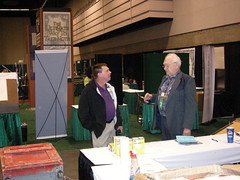 Alan also donated financially to the Association. He was a member of the 1891 Alliance and gave the Association $1,891 on a regular basis as long as this program lasted. Even though Alan had health problems for many years, he still came to the ANA conventions and helped where he could. An attached photo shows Alan with ANA Floor Manager Brian Miller. The other photo shows Alan with Kay Lenker at Chicago 2011 ANA.
Alan also donated financially to the Association. He was a member of the 1891 Alliance and gave the Association $1,891 on a regular basis as long as this program lasted. Even though Alan had health problems for many years, he still came to the ANA conventions and helped where he could. An attached photo shows Alan with ANA Floor Manager Brian Miller. The other photo shows Alan with Kay Lenker at Chicago 2011 ANA.
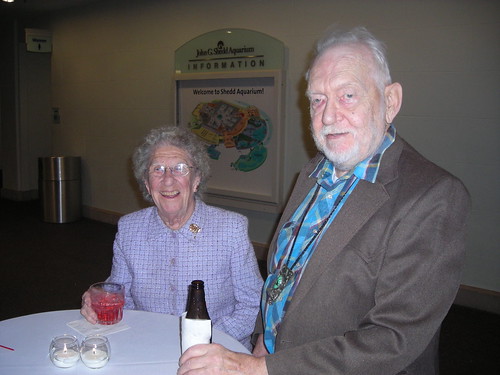
We will miss not seeing and talking to Alan at conventions. We think that his life was almost 100% "numismatics.” He served the hobby in an exemplary and dedicated manner in many capacities. Not only did he serve on the ANA Board, but other hobby groups as well. Alan was an expert in error coins and was the author of several fine references dealing with that subject and others. Alan was the recipient of ANA Awards. In 1994 he was the recipient of the Medal of Merit and 2001 the Glenn Smedley Memorial Award. He also received numerous literary awards. He will be greatly missed by his thousands of friends throughout the United States. Our sincere sympathies and condolences to his family. Rest in Peace Alan, as we will never forget you.
When Alan Herbert, the renowned Answerman who writes the Coin Clinic column in Numismatic News died Saturday at the age of 86, an era came to an end.
When he began writing for Numismatic News in late 1968, he probably did not realize that he would continue his association with the paper in one form or another for the next 44 years or so.
His role with Numismatic News began as an authority on error coins and that was the topic of his “Odd Corner” column.
Alan took it as his mission to educate collectors as to the many errors that are common and the few that are not.
Another thing that was so compelling was Alan’s sharing of credit. He would photograph and publish images of coins sent to him by readers and announce to the world that this person was the finder of such and such.
A public slap on the back certainly didn’t hurt his many contacts in numismatics who supplied him with coins to evaluate. Some were regulars. Some asked one question and that was it.
Alan was great fun to work with in a reserved sort of way. His many experiences of life would turn into stories shared at a quiet moment.
My favorite was when he lived in Germany, long before East and West were reunited.
Germans like to know what you do for a living. It affects how they treat you.
Alan Herbert proudly wore our corporate Krause Publications pin when it was created. Many readers might recognize the “KP” initials.
The Germans did, too. It meant something else.
He noticed his good friends behaving unusually.
One had the courage to ask him: “Are you really a member of the Communist Party?”
Alan quickly put the pin away.
To read the complete article, see: Alan Herbert will be missed (www.numismaticnews.net/buzz/alan-herbert-will-be-missed)
ON THE TOP U.S. MINT DIRECTORS
Regarding last week's question about Favorite Mint Directors, Gene Brandenburg writes:
Sometime during the 90's, U.S. Mint Director Phil ("the real") Diehl walked into my coin store in Alexandria, Va. one afternoon with a small group of employees after having lunch nearby. He was curious about how well some of the commemorative programs were doing in the aftermarket and I showed him a "Graysheet" (Coin Dealer Newsletter) showing that many were trading well below their issue price - some barely above melt/scrap. His entourage were courteous, polite and curious and a nice discussion ensued. I was impressed.
My next encounter with a mint director was with Ed Moy who sadly lacked prudence in his choice of dinner companions. He was seen in Old Town Alexandria (November 2010) dining with the infamous "gang of 12" - also known as Nummis Nova (Schenkman, Leidman, Schena, (gangleader) Homren and other ruffians). Mr. Moy was articulate and entertaining, answering all questions and giving a good picture of how the mint was running, their production problems with the new 5 oz. silver coin, etc. It was a fine evening for Nummis Nova but word must have leaked out about his unfortunate decision to come and he left office several months later. Nummis Nova hung another scalp on their lodge pole.
To read the earlier E-Sylum article about our dinner with Director Moy, see: WAYNE'S NUMISMATIC DIARY: NOVEMBER 14, 2010 (www.coinbooks.org/esylum_v13n46a13.html)
Ed Reiter writes:
I read with interest the list of Aaron Swartz’s favorite U.S. Mint directors, as reported by John Kraljevich in The E-Sylum dated Jan. 20. I respect John’s judgment, so I defer to his conclusion that this “hacker/Internet genius” was exceptionally smart and talented. In fact, being partial to iconoclasts, I find myself admiring his accomplishments – even though some appear to have been a bit outside the bounds of established law – and join John in lamenting his sudden death.
I question, however, whether this troubled young man – who took his own life recently – really displayed much genius in assessing the men and women who have headed the U.S. Mint over the last 220 years.
Philip Diehl, whom Swartz described as “the most respected U.S. Mint director America’s ever had,” served with distinction – but personally, I don’t believe he ranks among the top five holders of the office, much less at the very top, where he was listed by Swartz. The main accomplishment of Diehl’s tenure, establishment of the 50 State Quarters Program, was the brainchild of other “fathers,” including David Ganz, Harvey Stack and Congressman Michael Castle – though Diehl, to his credit, did provide key support in bringing the program to fruition.
Since John and I are both members of the Rittenhouse Society, I would feel somewhat squeamish about omitting David Rittenhouse, our first Mint director. Swartz’s list includes him, and so would mine. In my view, however, another early Mint director, Elias Boudinot, is just as deserving of recognition, if not more so. Boudinot held the office for nearly a decade, from 1795 to 1805 – three times longer than Rittenhouse – and skillfully dealt with problems just as taxing as those that confronted Rittenhouse. Not just incidentally, he served as president of the Continental Congress in 1782-83, making him the leader of the nation – under the Articles of Confederation – seven years before George Washington.
Swartz’s list includes three other names: “Patterson, Ross, Sims.”
There were two Mint directors named Patterson: Robert Patterson (1805-1824) and his son, Robert Maskell Patterson (1835-1851). Both were highly competent and both might well be ranked in the Top 5 – although, from a numismatic standpoint, the younger Patterson had a hand in more major developments, including the introduction of steam-powered coin production and the opening of three new branch mints in the South. I would put Robert the Younger on my list.
Nellie Tayloe Ross is clearly an excellent choice, based on the length and quality of her stewardship and also her symbolic importance. She was the first woman to serve as Mint director, just as she had been the first woman elected as governor of a state. That state, Wyoming, was the first to grant women the right to vote. Ross was Mint director from 1933 to 1953 – a time of major change and growth. One blot on her record was the appointment of curmudgeon Leland Howard, implacable foe of 1933 double eagles and coin collecting in general, as deputy Mint director.
Though Swartz was fully justified in listing Director Ross, his choice of Stella Hackel Sims is puzzling, to say the least. I had a good relationship with Sims during her years of service, from 1977 to 1981 – a period during which I became Numismatics columnist for The New York Times. She was easy to reach (unlike some subsequent Mint directors) and forthcoming in response to any questions I might have had. Since then, however, it has come to light that many irreplaceable records in the Mint’s archives were destroyed at Sims’ direction. Swartz might not have known of this – but from a numismatic standpoint, it argues for Sims’ inclusion among the worst Mint directors, not the best.
From my perspective, the best Mint director from the last half of the 20th century was Sims’ immediate predecessor, Mary Brooks – who does not appear on Swartz’s list. I dealt with Brooks and her assistant, Roy Cahoon, on an almost daily basis during my 13 months as editor of Numismatic News and found them readily accessible, highly knowledgeable and unfailingly helpful. Brooks played a major role in the Bicentennial coin program and became a much better friend to our hobby than her predecessor, even though the latter was inexplicably enshrined in the ANA Hall of Fame.
Others not on Swartz’s list merit mention as well – notably James Ross Snowden, James Pollock and Richard Linderman. I suspect these three would all make a “Top 10” compilation, but that’s a list for another rainy day – or, more likely, the next Pennsylvania blizzard. For now, five is enough.
To read the earlier E-Sylum article, see: NOTES FROM E-SYLUM READERS: JANUARY 20, 2013: Aaron Swartz's Favorite US Mint Directors (www.coinbooks.org/esylum_v16n03a12.html)
NOTES FROM E-SYLUM READERS: JANUARY 27, 2013
Westphalia One Billion Mark Coin
David M. Sundman writes:
Since this discussion continues, here are two images of the scarce One Billion Mark, (long scale) Notgeld from Westphalia. In the U.S. we’d call this One Trillion marks.
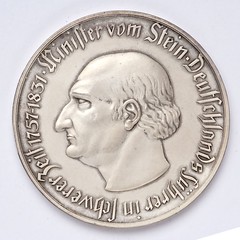

Westphalia One Billion/One Trillion Mark Coin
To read the earlier E-Sylum article, see: NOTES FROM E-SYLUM READERS: JANUARY 20, 2013: On German Hyperinflation (www.coinbooks.org/esylum_v16n03a12.html)
Labor Exchange Note Sizes
Regarding my comment on the different sizes of Labor Exchange notes, Wendell Wolka writes:
Labor Exchange notes come in several sizes depending on the denomination as well as at least two different colors.
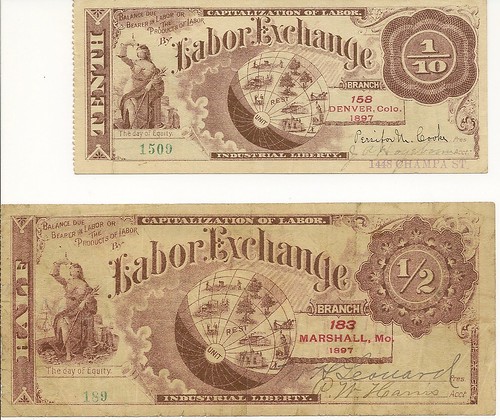
To read the earlier E-Sylum article, see: ADDITIONAL LABOR EXCHANGE NOTES (www.coinbooks.org/esylum_v16n03a19.html)
The Traveling Liberty Bell
Ron Guth wrties:
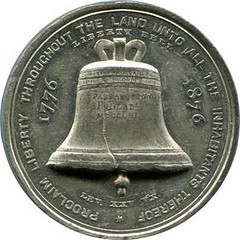 The article on the Washington-Liberty Bell Centennial Medal in your January 20, 2013 issue reminded me that the Liberty Bell was a featured exhibit at the Panama-Pacific Exposition in 1915 in San Francisco. The U.S. government actually sent this sacred American treasure on a specially constructed railcar to the Exposition, with several whistle stops along the way for public viewings. The events are recorded in various photographs, postcards and booklets from the period. The first time I heard of this I was incredulous; one can only imagine the improbability of a repeat occurrence today.
The article on the Washington-Liberty Bell Centennial Medal in your January 20, 2013 issue reminded me that the Liberty Bell was a featured exhibit at the Panama-Pacific Exposition in 1915 in San Francisco. The U.S. government actually sent this sacred American treasure on a specially constructed railcar to the Exposition, with several whistle stops along the way for public viewings. The events are recorded in various photographs, postcards and booklets from the period. The first time I heard of this I was incredulous; one can only imagine the improbability of a repeat occurrence today.
To read the earlier E-Sylum article, see: QUERY: WASHINGTON-LIBERTY BELL CENTENNIAL MEDAL INFO SOUGHT (www.coinbooks.org/esylum_v16n03a17.html)
Jules Fonrobert Sale Catalog Available on Google Books
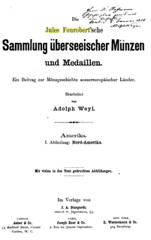 Dave Bowers writes:
Dave Bowers writes:
If it wasn’t mentioned, the entire Fonrobert sale catalog is on Google Books—free download. The Fonrobert catalog has far and away the most detailed descriptions of low- and medium-value U.S. tokens, many worth less than a dollar at the time!
To read the earlier E-Sylum article, see: MORE ON JULES FONROBERT (www.coinbooks.org/esylum_v16n02a15.html)
To read the Fonrobert catalog on Google Books, see:
Die Jules Fonrobert'sche sammlung überseeischer münzen und medaillen
How Much is That Nugget Worth ...?
Last week we quoted an article which stated, “An amateur prospector has discovered a once-in-a-lifetime find in the most unlikely of places - finding a huge lump of gold worth £200,000 in the Australian bush.”
John Regitko of Toronto, Ontario writes:
How much is it worth outside the Australian bush, say, in Melbourne?
Get it? Dumb, but then I’m Canadian, eh!
Dan Demeo writes:
The story seems to mix freely avoirdupois ounces (28.4 grams) with Troy ounces (31.1 grams). 16 avoirdupois ounces make up our common pound, 454 grams. 12 Troy ounces make a Troy pound, an obsolete measure, but the Troy ounce is the measure used for evaluating precious metals, like gold. However you measure it, 5 1/2 pounds of gold is certainly not an insignificant amount, nearly 100 troy ounces. At least they didn't give its weight in stones, and I'm sure it was more interesting than an old bonnet (car hood--have to translate, it's written in English).
To read the earlier E-Sylum article, see: AUSTRALIAN MAN FINDS MASSIVE GOLD NUGGET (www.coinbooks.org/esylum_v16n03a28.html)
Kerry Rodgers' Article on Ing Ing Jong
 Last week's article about Perth Mint coin designer Ing Ing Jong was based on an article by Kerry Rodgers. The article was in World Coin news and is available on Numismaster.com.
Last week's article about Perth Mint coin designer Ing Ing Jong was based on an article by Kerry Rodgers. The article was in World Coin news and is available on Numismaster.com.
To read the original article, see: Perth Illustrator Brings Snake to Life (www.numismaster.com/ta/numis/Article.jsp?ad=article&ArticleId=26351)
To read the earlier E-Sylum article, see: PERTH MINT COIN DESIGNER ING ING JONG (www.coinbooks.org/esylum_v16n03a30.html)
OWNER OF THE SPRINKLE 1884 TRADE DOLLAR SOUGHT
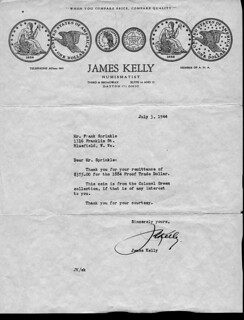 Mark Van Winkle of Heritage writes:
Mark Van Winkle of Heritage writes:
I have a letter and receipt from James Kelly dated 1944 for the sale of the 1884 Trade dollar to Frank Sprinkle. These papers accompanied the coin we sold that was owned by Jack Lee. When I looked into the coin’s pedigree I found out Jack’s coin was not the Sprinkle coin. I called Jack and he said he got the papers from the dealer he purchased the coin from, and obviously not to include them when his coin was to be sold. Fine, but then I’m left holding the letter and receipt from 69 years ago. I do not know who owns the Sprinkle 1884 Trade dollar, but if he or she would contact me or they could contact you as an intermediary, I would be happy to send these out.
The trail ran cold on the present whereabouts of the Sprinkle dollar after Legend handled it several years ago. The 10-coin roster was included in our November 2005 auction, when we sold the Menjou-Baldenhofer-Wolfson-French coin: coins.ha.com/c/item.zx?saleNo=388&lotNo=2281
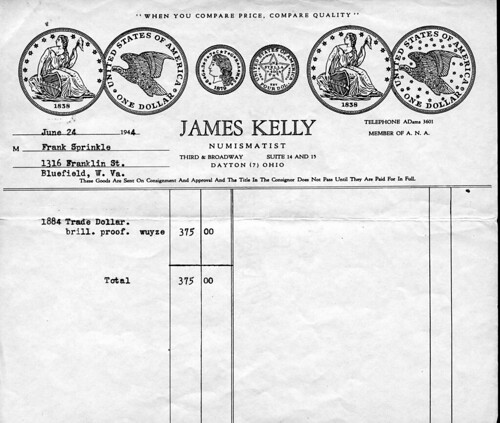
GEORGE WALTON PHOTO IDENTIFICATION SOUGHT
Mark Borckardt writes:
I have attached two photos, each showing George Walton at the left. I am seeking identification of the other individuals in each of these photos, along with the venue and year of the photo. Perhaps E-Sylum readers might help. The second photo, titled Young Geo Walton, was likely taken at an ANA Convention.

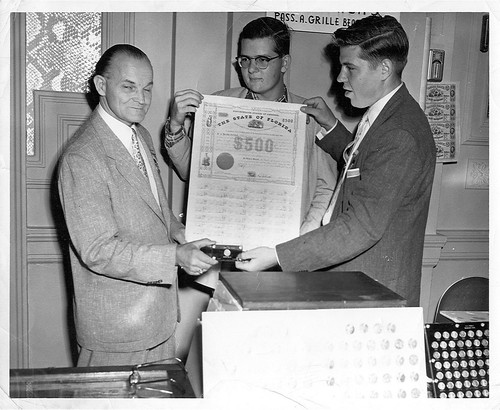
THE BOOK BAZARRE
ARTICLE PROFILES $24,000 HOBO NICKEL BUYER CHRIS DEMPSEY
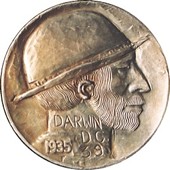 Erie coin dealer Chris Dempsey made history this month by paying $24,200 for a nickel.
Erie coin dealer Chris Dempsey made history this month by paying $24,200 for a nickel.
He said the purchase is worth every penny.
"It is not every day that you can buy something for less than $25,000 that is one of the most famous," he said. "I bought it for me."
Dempsey, 32, co-owner of coin merchant and jeweler Dempsey & Baxter, 6032 Peach St., paid the most money on record for what is known as an original hobo nickel.
He bought a 5-cent Indian head coin on which the artist, who was known to be a hobo, carved designs. The coin was minted in 1935 and was most likely altered in 1939.
Coin collectors prize hobo nickels -- Dempsey said thousands exist -- as small and special pieces of Americana. Dempsey and others said the nickels served as currency for hobos, who traded them for lodging and food as they hitched rides on the railroads during the Great Depression, looking for work.
"Each one is unique," said Paul Gilkes, who first reported on Dempsey's buy as senior staff writer at Coin World magazine, near Dayton, Ohio. "They are pieces of folk art."
He said many hobo nickels were likely passed down among generations as keepsakes.
"A lot of people might have them in their dresser drawers and don't know what they have," Gilkes said.
Dempsey bought the hobo nickel at the Original Hobo Nickel Society's 21st annual auction in Orlando, Fla., on Jan. 12. The coin was the last original hobo nickel in the collection of Georgia resident Bill Fivaz, 79, a top authority on hobo nickels.
"I had it for 25 years or so and thought that it was time to let someone else enjoy it," Fivaz said.
Dempsey is the grandson of his store's late founder, Jack Baxter, and the son of Baxter's partner and son-in-law, Jack Dempsey, who owns the store with Chris Dempsey and other members of his family. Chris Dempsey has been collecting hobo nickels for four years, and he is the webmaster for the Original Hobo Nickel Society. He said he learned about six months ago that the 1935 coin would soon go up for sale.
"I was saving my nickels and dimes, so to speak," Dempsey said.
Collectors consider Dempsey's coin one of the best of the lot. It was created by hobo George Washington "Bo" Hughes, one of two known carvers who crafted the nickels. Hughes' teacher was hobo Bertram "Bert" Wiegand.
To read the complete article, see:
Erie collector pays record $24K for coin
(www.goerie.com/article/20130125/NEWS02/301249873/Erie-collector-pays-record
-$24K-for-coin)
To read the earlier E-Sylum article, see: NOTES FROM E-SYLUM READERS: JANUARY 20, 2013: Hobo Nickel Brings Record Price (www.coinbooks.org/esylum_v16n03a12.html)
1794 DOLLAR SALE COVERAGE
Stack’s Bowers Galleries Chairman Emeritus Q. David Bowers recently appeared on Bloomberg Television’s “Money Moves” to discuss a coin that is expected to break all previous auction records, the 1794 Flowing Hair Silver Dollar.
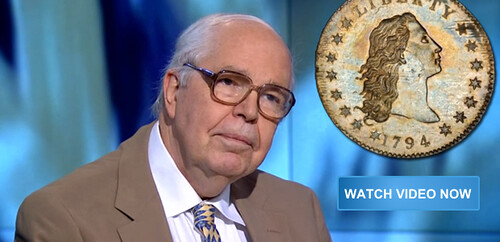
To watch the video, see: 1794 Silver Dollar Could Go for $6 to $7 Million (news.whitman.com/news/q-david-bowers-on-the-1794-dollar-that-could-sell-for-millions/)
To read the original press release, see:
Stack's Bowers Galleries Sets World Record With Sale Of 1794 Silver Dollar For $10,016,875
(www.prnewswire.com/news-releases/stacks-bowers-galleries-sets-world-record
-with-sale-of-1794-silver-dollar-for-10016875-188316191.html)
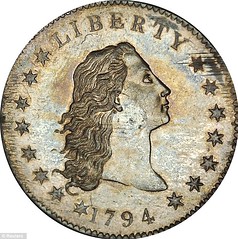 David Bowers, chairman emeritus of Stack's Bowers Galleries, said the coin has unique features that make it particularly valuable.
David Bowers, chairman emeritus of Stack's Bowers Galleries, said the coin has unique features that make it particularly valuable.
"It is the first American metal dollar struck and the finest known. You have these combinations coming together. No museum has an equal piece," he told Reuters.
The coin was part of the Cardinal Collection, amassed by the collector Martin Logies. Bowers described the collection as the "Old Masters" of coins struck during the earliest years of the U.S. Mint.
"I think it is extraordinary and I am very pleased that the first silver dollar is the first to top the $10 million threshold," said Logies, who purchased the coin three years ago.
To read the complete article, see:
Rare 1794 silver dollar sells for record $10 million at U.S. auction
(www.chicagotribune.com/news/sns-rt-us-coins-auction-record
bre90o061-20130124,0,4181608.story)
A 1794 silver dollar, which many experts believe was the first such coin struck by the U.S. Mint, sold for a record $10 million at auction on Thursday.
The Flowing Hair Silver Dollar more than doubled the previous $4.1 million record for a coin set in 1999, auction house Stack's Bowers Galleries said.
Legend Numismatics, a rare-coin firm based in New Jersey, bought the coin, which was the highlight of the evening sale in New York that fetched a total of $17.2 million.
To read the complete article, see:
It's top dollar! Rare 1794 silver dollar sells for record $10 million at U.S. auction
(www.dailymail.co.uk/news/article-2268041/Rare-1794-silver-dollar-sells
-record-10-million-U-S-auction.html)
1792 HALF DISME SALES
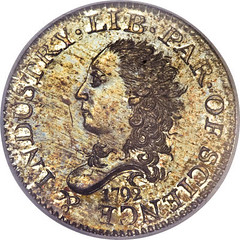
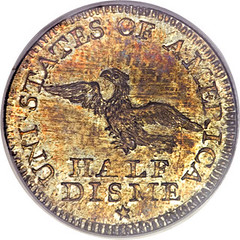
From the Heritage Press Release:
A unique and historic 1792 Half Disme realized $1.41 million dollars on Jan. 10 as part of Heritage Auctions’ U.S. Coin Florida United Numismatists (FUN) Signature Auction in Orlando, FL. The price realized, which includes 17.5% Buyer’s Premium, is a record for a Half Disme.
The coin, previously owned by Floyd Starr, is graded Specimen-67 PCGS. It was the lead lot of the Heritage rare coin auction at FUN, which realized more than $44.9 million, and is among the best of all surviving examples of the issue.
The mintage of these coins is variously estimated at 1,500 to 2,000 coins, based on documentary evidence left by Thomas Jefferson, though only an estimated 250 or so of them survive to this day, and none of them in better shape than the coin sold by Heritage Auctions on Jan. 10 in Orlando.
A simple memorandum, in three different versions, provides much of what we know about the 1792 half dismes, and yet, it has also been the source of much confusion. The first copy of this memo was discovered by Edward Haden early in 1943 and was brought to the attention of the numismatic world a few weeks later. Shortly after this announcement, Philadelphia numismatist Charles McSorley, Jr., incorrectly identified the author as Jonas R. McClintock.
A second and slightly altered copy of the same memo came into the possession of Walter Breen in the early 1960s, and a third copy was acquired by Carl Herkowitz in 1995. It was this third copy of the memo, also slightly revised, that allowed a positive identification of the author, John A. McAllister, Jr. The earlier attribution of this memo to Jonas McClintock has been continually repeated over the last 60 years, and even today, the misattribution still appears in print.
Herkowitz and coauthor Joel J. Orosz prepared a detailed article around this document, solved its authorship, and answered questions about the history of this famous coinage issue. Their article, "George Washington and America's 'Small Beginning' in Coinage: The Fabled 1792 Half Dismes," appeared in the 2003 edition of American Journal of Numismatics, second series, published by the American Numismatic Society in 2004.
The text of the final version of the McAllister memo reads:
"Description of Half Dismes coined in 1792"
"On one side = a Head = 1792 = Lib. Par. of Science and Industry --
"On the other side = an Eagle Flying = Half Disme = United States of America --
"In conversation with Mr. Adam Eckfeldt (Apr. 9, 1844) at the Mint, he informed me that the Half Dismes above described, were struck, expressly for Gen. Washington, to the extent of One Hundred Dollars, which sum he deposited in Bullion or Coin, for the purpose. Mr. E. thinks that Gen. W. distributed them as presents. Some were sent to Europe, but the greater number, he believes, were given to friends of Gen. W. in Virginia. No more of them were ever coined. They were never designed as Currency. The Mint was not, at the time, fully ready for being put into operation. The Coining Machinery was in the cellar of Mr. Harper, saw maker, at the corner of Cherry and 6th Sts, at which place these pieces were struck."
The study by Orosz and Herkowitz provides an in-depth examination of this memorandum, and also looks at much of the history of this issue. In the past, many false and unsubstantiated claims have appeared in print about this coinage issue. Among such claims is one that suggests Martha Washington posed as "Miss Liberty" for the engraver. Another claim that remains unsupported is that the Washingtons provided their family table service for the coinage.
Both of these claims date back to 1860, when James Ross Snowden wrote: "The bust of Liberty is popularly supposed to represent the features of Martha Washington who is said to have sat for the artist while he was designing it ... This piece is said to have been struck from the private plate of Washington, which is not unlikely, considering the great interest which he took in the operations of the infant mint, visiting it frequently, and personally superintending many of its affairs." Today, the numismatic world is indebted to the efforts of Orosz and Herkowitz for correcting many past claims.
Unfortunately, these authors allowed a new and unsubstantiated claim to be introduced. While an entry in Thomas Jefferson's "household account book" dated July 13, 1792, has been known for many years, a related entry dated July 11, 1792 was first published in the Orosz-Herkowitz study. The two entries read:
July 11, 1792: "Delivd. 75 D. at the Mint to be coined."
July 13, 1792: "Recd. From the Mint 1500 half dimes of the new coinage."
To view the full lot description, see: 1792 H10C Judd-7, Pollock-7, R.4 as a Business Strike (coins.ha.com/c/item.zx?saleNo=1181&lotNo=5570)
Pete Smith forwarded this note about the Cardinal Collection 1792 half disme that was sold by Stack’s Bowers on January 24th:
The Knoxville – Cardinal 1792 half disme was sold by Stack’s Bowers with the sale of the Cardinal Collection on Thursday, January 24. Graded MS-68 by NGC, it is the half disme with the highest numerical grade. The coin achieved a hammer price of $975,000. The addition of a 17.5% buyers fee brings the price up to $1,145,625.
In the past month there was much discussion on the Collectors Universe Forum about the Cardinal coin, certified by NGC as MS-68, and the Starr coin, certified by PCGS as SP-67. The general consensus was that the coins are very different and each is a fantastic and beautiful coin.
The catalog for the Cardinal Collection included commentary on “America’s Most Distinctive Coin.” This was contributed by NBS members Leonard Augsburger, Joel J. Orosz and Pete Smith. The three researchers and authors are working on a book with the tentative title 1792: Birth of a Nation’s Coinage. Orosz has also contributed preliminary articles on the topic to The Numismatist, most recently for the December 2012 issue.
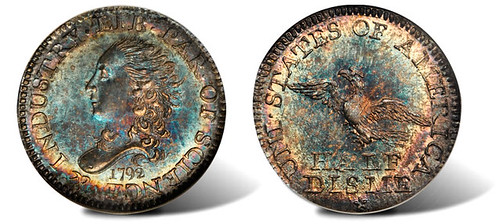
To view the complete Stacks-Bowers lot description, see: Lot #13093. 1792 Half Disme. LM-1, Judd-7, Pollock-7, The Only Known Dies. Rarity-4. MS-68 (NGC). (stacksbowers.com/auctions/auctionlot.aspx?lotid=433604)
QUERY: ASSISTANCE SOUGHT FOR RESEARCH ON 1792 COINAGE
With the tentative title of 1792: Birth of a Nation’s Coinage, authors Leonard Augsburger, Joel J. Orosz and Pete Smith take on the legislative process and activities of the Mint and Mint officials before the Mint had a physical plant for production of coinage. The coinage of 1792 includes various pattern coins and the half dismes that saw broad circulation.
The 1792 coin designs began with legislative debate and could have turned out quite differently from the patterns and denominations we know today. This legislative process and timeline will be included in early parts of the book.
Hundreds of articles and auction catalogs, published since the 1850’s, continue to perpetuate errors and fabrications introduced by the earliest writers. The current book will debunk many of the numismatic myths that surround the coins.
The authors are compiling pedigrees for as many of the coins as possible. While auction appearances are a good source of this information, there are many gaps that must be filled with the help of owners who are not named in the catalogs. The authors are actively seeking assistance from any past or current owner of one of the 1792 coins.
This project follows the highly acclaimed publication of The Secret History of the First U. S. Mint by Augsburger and Orosz. The authors intend to include the same meticulous research and profuse illustrations with their current project.
MORE ON THE 1811-DATED "OIE DIOE" TOKEN
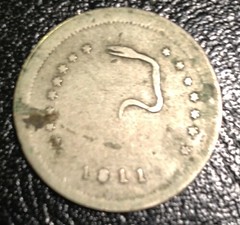
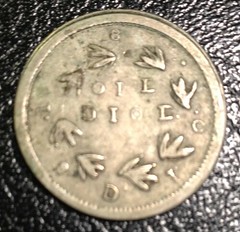
From the Parsons sale catalog:
2077a. Unknown origin. 1811. Snake and 15 stars. R. Eight separate triple leaves, enclosing OIE DIOE, outside .1.0. 8 *0. I D S. Feuchtwanger metal. Size of a dime. Good. Have never met with another — though bearing date of 1811, I take it to be of 1835-1840 work.
Ken Bressett writes:
Lot 2077a brought 50c in the Parsons sale. My copy of the sale is priced but has no buyer’s names.
To read the earlier E-Sylum article, see: QUERY: UNUSUAL 1811-DATED TOKEN INFORMATION SOUGHT (www.coinbooks.org/esylum_v16n03a16.html)
ROYAL CANADIAN MINT TO ACCEPT CENTS FOR MELTING
Canada is approaching a notable event in a few days. On February 4, 2013 the Royal Canadian Mint will begin accepting shipments of cent coins to be scrapped for their metal content.
It is expected six billion cents will be retired and melted. This will occur at a rate of a billion cents a year over the next six years. No announcement has been made as to the disposition of the recycled metal.
A large number of cents will be handled by Coinstar Inc. of Canada which receives a large portion of cents in the coins that are deposited in their machines in exchange for cash. Coinstar charges a 12 percent fee for exchanging coins for cash in Canada.
I have mentioned this Canadian cent retirement in The E-Sylum before. Now the success of the cent abolishment is influencing Canadians to consider the same fate for their nickel. While some citizens consider such a move a sacrilege because the fact nickel mining is a major industry in the country. Others, notably Jean-Pierre Aubry, a former 30-year economist for the Bank of England, insists the nickel is obsolete and should be the next coin for retirement.
"We see less and less people now .... digging in their wallets for nickels," he said in a recently interview, Aubry was a major proponent for eliminating the cent from circulation.
He stated the cent reached the tipping point for elimination in 1982 (undoubtedly with the rise in copper price at that time). He is delighted the cent has finally reached that point, even 30 years later. He also relates the nickel has long since passed its tipping point . He left unsaid his hope would not require 30 years to retire the nickel.
This news comes on the crest of my Op-Ed piece in last week's E-Sylum, originally published in the Wall Street Journal, for replacing low value coins in America with high value coins $5 and $10 circulating coins; And a big thanks to editor Wayne Homren for running nearly the entire length of that article last week.
It is my hope that U.S. Treasury officials are closely watching the events in Canada. They should consider an intelligent revamping of our entire coinage system and not the patchwork of killing one coin at a time.
To read the earlier E-Sylum article, see: DICK JOHNSON PROPOSES MAKING RITTENHOUSE STATUE OF MELTED CENTS (www.coinbooks.org/esylum_v16n03a08.html)
THE BOOK BAZARRE
A PANIC OF 1893 NOTE FROM RICHMOND, VA
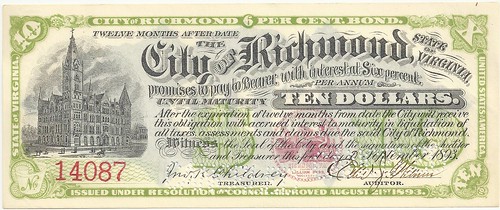

Eric adds:
I maintain that joining The E-Sylum is one of the best things I have done numismatically - especially when I get in contact with like-minded folks like Jim.
To read the earlier E-Sylum article, see: WAYNE'S NUMISMATIC DIARY: JANUARY 20, 2013 (www.coinbooks.org/esylum_v16n03a20.html)
1949 HARRY TRUMAN OFFICIAL INAUGURAL MEDAL

OFFICIAL MEDAL. HST 1949-3. 51mm. Bronze. Carl Paul Jennewein, Sc. (U.S. Mint). Obverse with a robust portrait of Truman to the left surrounded by 48 stars. The reverse features a preeminent figure of Liberty and a group of small figures below meant to suggest the aspirations of humanity for Freedom. The reverse is inscribed: HARRY S/ TRUMAN/ INAUGURATED PRESIDENT/ OF THE/ UNITED STATES/ JANUARY 20/ 1949.
 Joe's Fixed Price List stated the president's name as "HARRY S. TRUMAN", but I couldn't resist this nitpick. Look closely at the medal. It's "Harry S Truman" (with no period after the S).
Joe's Fixed Price List stated the president's name as "HARRY S. TRUMAN", but I couldn't resist this nitpick. Look closely at the medal. It's "Harry S Truman" (with no period after the S).
Now, Truman did indeed use a period after his middle initial in his signature, and most official government documents use the period as well. But editors have been in a tizzy ever since because Truman didn't actually have a full middle name, just the letter "S", said to be a compromise of his parents between the names of his two grandfathers. Since it's not an abbreviation, should there be a period? With or without the period, it's a great medal by Jennewein. -Editor
ATTRIBUTING U.S. COINS AT THE BRITISH MUSEUM
 1793 Half Cent
1793 Half Cent
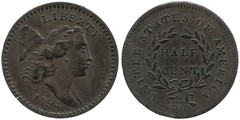 1794 Half Cent
1794 Half Cent
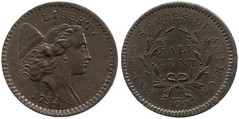 1794 Half Cent
1794 Half Cent
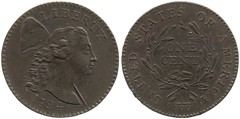 1794 Cent
1794 Cent
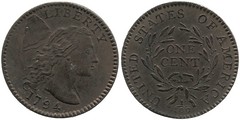 1794 Cent
1794 Cent
Dan Demeo writes:
Most were pretty trivial, one not so. The copper coins were easy:
1793 C.2 half cent
1794 C.9 half cent
1794 C.7 half cent
1794 S.24 cent
1794 S.67 cent

Dan adds:
Not being a collector of early silver, I did know that all the early silver coins looked similar, with no denomination as part of the design, being distinguished by size (weight), and the presence of edge lettering on the half and dollar. However, no weight or size reference was present. My trusty Red Book showed only 16 star varieties of 1797 dollars, so not a dollar. Halves, I do have Overton's book, and both varieties appear to have crowded reverses with large letters--not a half. Quarters, easy, they didn't make 1797 quarters. Dimes, I see 16 and 13 star varieties in 1797, no 15 star variety. So it must be a half dime, and they did have a 15 star variety of 1797, but I have no reference for that series. Not bad for having a minimum of expertise and references.
Bill Eckberg forwarded the article to some half cent collectors. Regarding the 1794 C7, he writes:
The owner of the Missouri Cabinet says he compared his coin side-by-side with the BM specimen a number of years ago, and thought his was better by a point or two. He said he likes the two of them because they are the only examples that show the full hair detail of that obverse die. They are the only two UNCs, and the hair is more blunt on the other varieties with that obverse.
All who replied agreed that the British Museum coin now looks brown, so the full red Missouri Cabinet example is unquestioned as the finest.
To read the earlier E-Sylum article, see: MORE U.S. COINS AT THE BRITISH MUSEUM (www.coinbooks.org/esylum_v16n03a21.html)
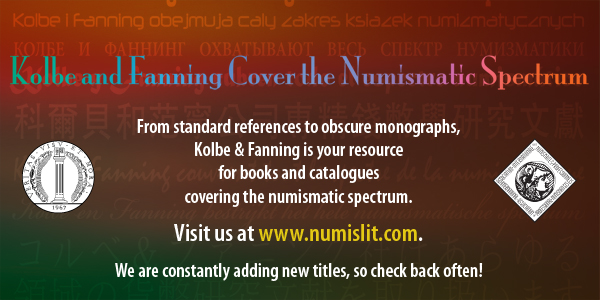
SOME RECENT NEW COIN DESIGNS: JANUARY 27, 2013
Israel: Coral Reef of Eilat
Arthur Shippee forwarded a new bank of Israel coin commemorating the Coral Reef of Eilat.
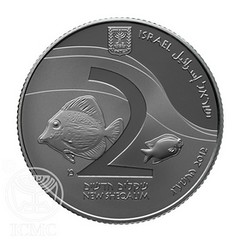
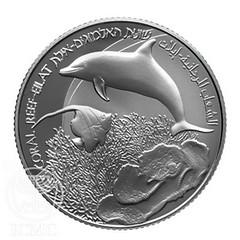
Lithuania 1863-64 Uprising Commemorative Coin
Forwarded by P.K. Saha:


Lithuania 50 Litu coin on 150th Anniversary of 1863-64 uprising
Piri Reis World Map Coin
Forwarded by P.K. Saha:
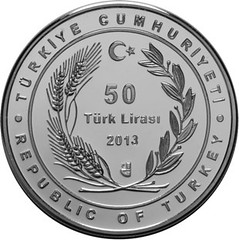
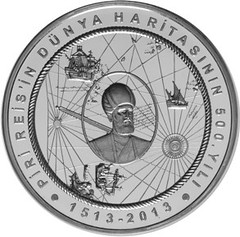
Turkey's coin on the 500th Anniversary of Piri Reis World Map
Finland 10 Euro coin on F.E. Sillanpää
Forwarded by P.K. Saha:
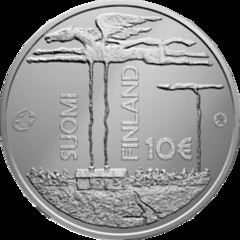
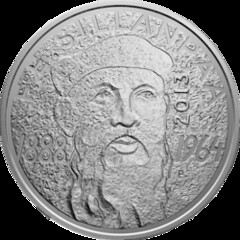
Finland 10 Euro coin commemorating author F.E. Sillanpää
He adds:
F. E. Sillanpää (1888−1964), a master author, won the Nobel Prize for Literature for 1939. In the reasons for the Award, the writer was praised for his deep understanding of his country’s peasantry and the exquisite art with which he portrayed their way of life and their relationship with nature. The master writer was popularly known as “Taata”, the unofficial grandfather to the country. From recollections of his childhood Christmases emerged a well-loved tradition: Grandpa gathered the whole nation devoutly around their radios with his easy-going Christmas “talks”. Sillanpää is best remembered for his works The Maid Silja/Fallen Asleep While Young (1931) and Meek Heritage (1919).
Malta 50 Euro
Forwarded by P.K. Saha:
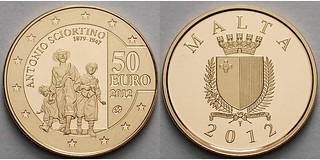
THE BOOK BAZARRE
MAIL BID SALE # 18 CLOSES SATURDAY FEBRUARY 2, 2013
CATALOGS ARE BEING SENT TO ALL INDIVIDUALS ARE ON OUR
MAILING LIST, AND ON REQUEST AT NO CHARGE. THE CATALOG
IS ALSO VIEWABLE ON OUR WEB SITE.
BIDDERS MAY ENTER THEIR BIDS BY MAIL, TELEPHONE, EMAIL OR FAX.
DAVID SKLOW – FINE NUMISMATIC BOOKS
P.O. BOX 6321
COLORADO SPRINGS, CO 80934
TEL: (719) 302-5686
FAX: (719) 302-4933
numismaticbooks@aol.com
www.finenumismaticbooks.com.
INTERVIEW WITH AUTHOR OF WORLD CURRENCIES IN TAIWAN
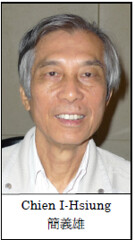 In this issue, I talk with Mr. Chien I-Hsiung [簡義雄]. Mr. Chien is a collector of Taiwanese coins and is best known for his book World Currencies in Taiwan. The book deals with the entire history of coins which circulated in Taiwan from ancient times [Chinese cash], the period of Dutch and later Spanish occupation [1624-62], the period of Koxinga rule [1661-83], Ching dynasty rule [1683-1895], the very brief five months of the Republic of Formosa [1895], Japanese rule [1895-1945] and the period of the Republic of China [1945-date]. My focus was on the sections of the book that dealt with chopmarked coinage as well as his experiences collecting coins. My interview was conducted in person in Taipei.
In this issue, I talk with Mr. Chien I-Hsiung [簡義雄]. Mr. Chien is a collector of Taiwanese coins and is best known for his book World Currencies in Taiwan. The book deals with the entire history of coins which circulated in Taiwan from ancient times [Chinese cash], the period of Dutch and later Spanish occupation [1624-62], the period of Koxinga rule [1661-83], Ching dynasty rule [1683-1895], the very brief five months of the Republic of Formosa [1895], Japanese rule [1895-1945] and the period of the Republic of China [1945-date]. My focus was on the sections of the book that dealt with chopmarked coinage as well as his experiences collecting coins. My interview was conducted in person in Taipei.
CG: Why did you decide to write your book World Currencies in Taiwan1?
CH: Actually it was after I read Joe Cribb’s book on Sycee in the British Museum2. That book is a standard reference book in the field of sycee and I noticed a mistake in the description in the section on Taiwan. I decided that I would write a standard reference book for Taiwan, a book that showed the multicultural influences in Taiwan through coins.
CG: have you written anything else?
CH: No but my second book, The World’s Eyes on Taiwan, will be published in a year or two. It’s on Taiwanese history.
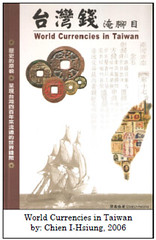 CG: How long did it take you to write World Currencies in Taiwan?
CG: How long did it take you to write World Currencies in Taiwan?
CH: About two years.
CG: I know your book isn’t specifically about chop-marked coins but there are a large number of them pictured in the book. I counted 34 pages that have pictures of chopmarked coins which would be probably 150 or so coins. Are they all in your collection?
CH: Most of them are except the very rare Old Man dollars, Paintbrush dollars and Ration dollars or a few others that are noted in the book. These are from another Tai-wan collection.
CG: I know you have also had exhibitions of your collections.
CH: Yes, my book and collections were exhibited in the National History Museum in 2008 and the culture department of Taoyuan County [Taiwan] in 2009. My clock col-lection had also had a public exhibition.
CG: I want to ask you, why do you think so few Chinese collect chopmarked coins? Most of the interest comes from the west, not China or Taiwan.
CH: I think Chinese like perfect things. Chopmarks are considered damage. Personally I like chopmarks on coins – they are a piece of history and tell us something about the coins’ travels as it was used in trade.

For more information about the Chopmark Collectors Club, see: www.chopmarks.org
BRITAIN'S 1M AND 100M POUND BANKNOTES
 Carefully guarded in the Bank of England's vaults are a small number of very large banknotes. Called "giants" and "titans", they are not in circulation for good reason - each is worth a sum of money most of us can only dream of. What are they for?
Carefully guarded in the Bank of England's vaults are a small number of very large banknotes. Called "giants" and "titans", they are not in circulation for good reason - each is worth a sum of money most of us can only dream of. What are they for?
"When it comes to a £1m note, everybody thinks, 'What a fantastic thing'," says Barnaby Faull, head of the banknote department at the auctioneers Spink.
"What most people don't realise is they do actually exist."
But the £1m pound note - known as a "giant" - is not in circulation and it is inconceivable it will be made available from cashpoints. How many of us would risk carrying one around in our wallet, let alone have sufficient funds in our account to get one out?
But even the monetary value of the giant is relatively small compared to the "titan" - a banknote that promises to pay its bearer £100m.
Impractical though they are for everyday use, both play a vital role in the British currency system, by backing the value of the everyday notes issued by commercial banks in Scotland and Northern Ireland.
Many people know how a Scottish fiver can be viewed with suspicion by businesses in England. This backing aims to maintain everyone's confidence in the value the notes represent.
For every pound an authorised Scottish or Northern Irish bank wants to print in the form of its own notes, it has to deposit the equivalent amount in sterling with the Bank of England.
If necessary, notes from, for example, a struggling Scottish bank could be replaced with regular Bank of England cash.
"If there was an unfortunate situation when one of the banks failed, note holders would have the confidence that their notes were still valued as it said on them," says Victoria Cleland, head of notes at the Bank of England.
Very occasionally, older £1m notes have escaped from the Bank of England's vaults and archives.
Faull recalls being offered a cancelled £1m note issued in connection with the Marshall Plan - the US's post-war aid programme to Britain. It had been presented to a retiring chief cashier and his widow later offered it for sale.
He says the Bank of England asked him not to publicise the sale. "Million pound notes were not supposed to be out in the open."
To read the complete article, see: Britain's £1m and £100m banknotes (www.bbc.co.uk/news/magazine-21145103)
THE BOOK BAZARRE
MORE ON THE PROPOSED 7 1/2 CENT "COCA COLA" COIN
Coin World senior staff writer Paul Gilkes spent more than three months researching the intersection of Coca-Cola and numismatics. His research journey spanned law libraries, coin and antique dealers, private collectors, museums, historical societies and the Coca-Cola Company itself.
Paul shared, “The most challenging part was learning about the legislative proposals seeking intermediate coin denominations, including a 7½-cent coin.
“Although there are extensive citations online and in published historical accounts suggesting Coca-Cola President Robert W. Woodruff penned correspondence directly to the Treasury Department and President Eisenhower seeking such a coin, the Coca-Cola Company archives do not have evidence of the original correspondence or any copies.
“There was also no such record in the archives of the Eisenhower Presidential Library in Abilene, Kan., where the chief archivist conducted an exhaustive search and came up empty.
“What proved to be the most insightful into the question of intermediate coinage and Coca-Cola’s involvement was a copy of a March 1950 letter from an independent bottler provided to Coin World by an economist at Emory University who in 2004 questioned why the price of Coke stayed at 5 cents for more than 70 years and who also detailed efforts to contain the price.
“From there, I stumbled upon a reference concerning two days of congressional hearings in March 1950 devoted to intermediate coinage legislative proposals. Finally, the Moritz College of Law at The Ohio State University provided the 73 pages of congressional testimony outlining intermediate coinage efforts dating back to the early 20th century.”
To read the complete article, see: A research journey (www.coinworld.com/Articles/ViewArticle/a-research-journey)
To read the earlier E-Sylum article, see: QUERY: EVER HEARD OF THE 7 1/2 CENT "COCA COLA" COIN? (www.coinbooks.org/esylum_v15n48a14.html)
FEATURED WEB SITE: BRITISH RESTAURANT TOKENS
This week's Featured Web Site is Philip and Harry Mernick's site on British Restaurant tokens. Philip writes:We (my tokens, Harry’s web skills) have a new web site for the tokens issued by the World War II period, local authority operated, restaurants known as British Restaurants
From the site:
British Restaurants were created from the Communal Feeding Centres set up by the Ministry of Food in badly bombed areas. They were officially created in 1941 and their numbers grew rapidly. On 19 April 1941 there were 246 in 129 towns. Number 1000 (Slough) opened on 23 August 1941 and by 1943 there were more than 2000. The aim was to provide a decent quality balanced meal for a reasonable price where normal food distribution has been disrupted.
In some areas the British Restaurants were supplemented by similar establishments set up by the local authority. In London there was the Londoners’ Meal Service (Borough) and Civic Restaurants (London County Council). The restaurants were frequently housed in school buildings temporarily empty due to the evacuation of children to the countryside. Many stayed open after the end of hostilities, and in 1948 there were still 114 communal restaurants in London.
When they were originally set up, various payment schemes were employed; but in June 1942 the Ministry of Food issued an instruction that ‘all schemes for British Restaurants submitted in the future should propose the use of plastic discs as tokens of payment for meals’. Authorities using paper tickets were asked to change to plastic. If a local supplier was not known, the Ministry could provide a list of firms who would supply suitable tokens. Included with this instruction were the details of how an unnamed, but obviously highly regarded, British Restaurant used its plastic tokens.
There were different sizes for adults and children, and different colours for the various parts of the meals: red for meat, yellow for soup, green for sweet and brown for tea or coffee.
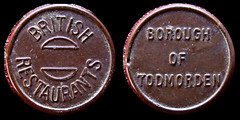
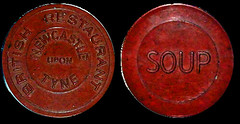
www.mernick.org.uk/br

